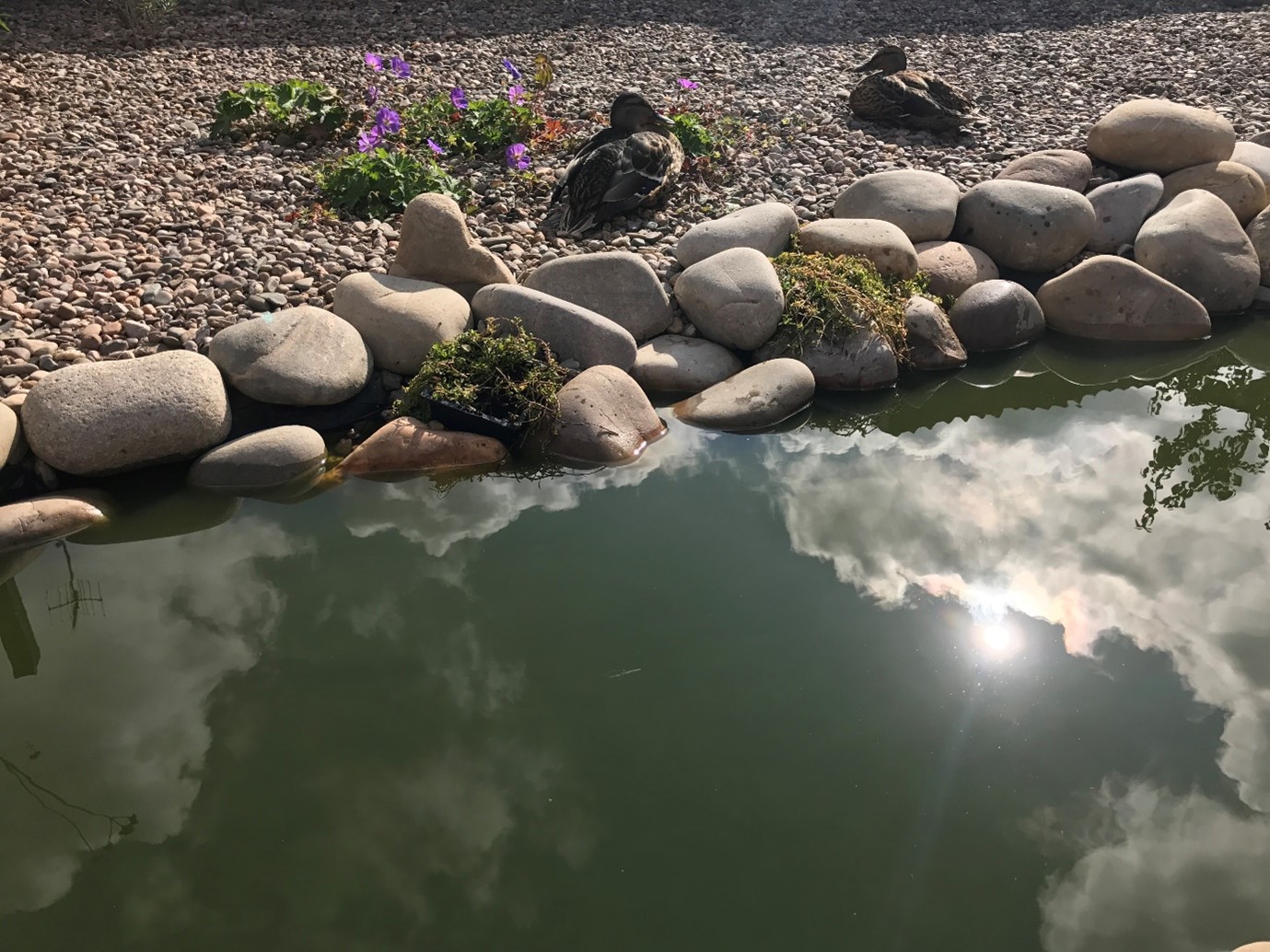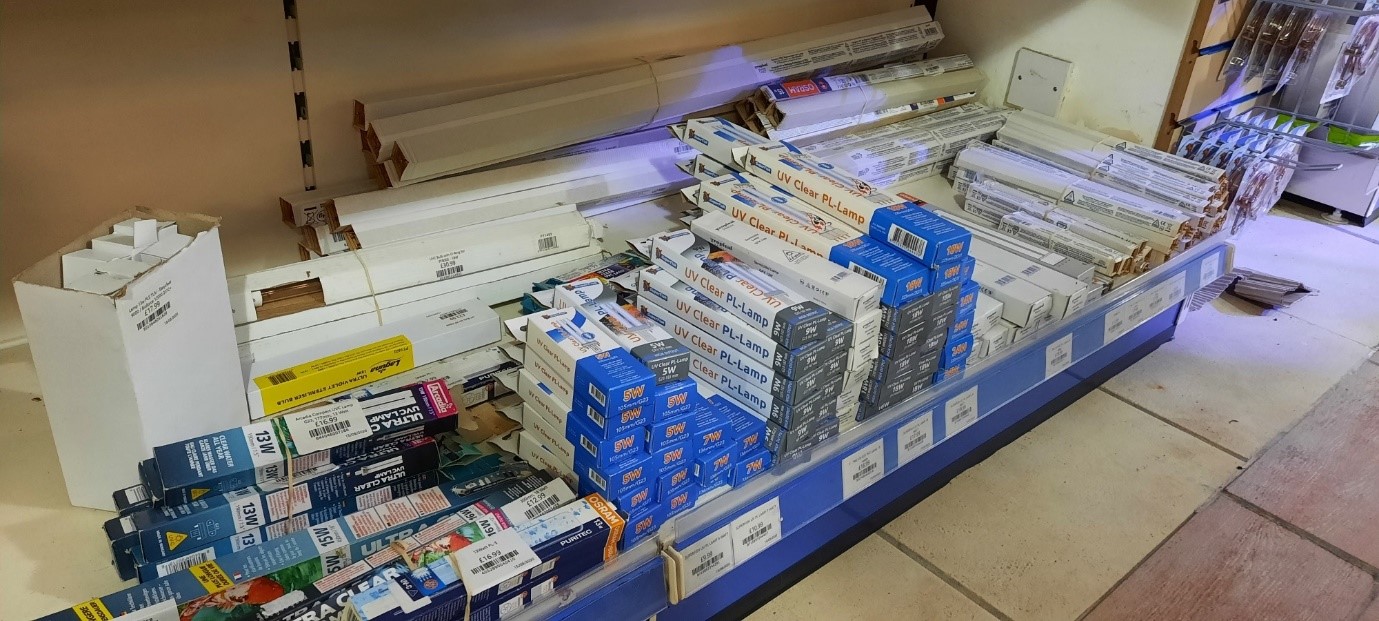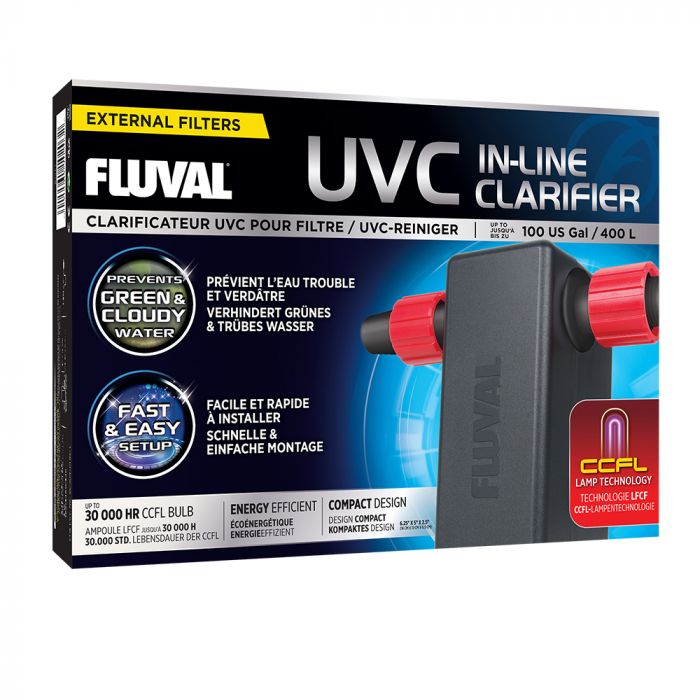Forty Shades of Green
Over millions of years, algae have been thriving in freshwater ecosystems and forming the base of important food chains. Fuelled by sunlight and dissolved nutrients, these simple microscopic plants are a familiar sight – all too familiar for many fish keepers.

The planktonic algae that cause green water thrive in conditions that we create for our pets, the combination of nutrient-rich water and bright light that we provide is exactly what they require. Reducing the fertility by out-competing them with plants can help, as can providing shade. The one technique that guarantees success though, is the use of an ultraviolet clarifier or UVC for short. https://www.fishkeeper.co.uk/pond-products/filters-uvcs-accessories/pond-uvcs?
As part of a filter set up, rated for the volume of the pond or aquarium, they are by far the most effective solution. They do need regular maintenance though and this consists largely of replacing the lamps as they age. Unlike many fluorescent lamps, which fail when at the end of their useful life, an ultraviolet lamp will lose output in the part of the spectrum responsible for killing algae cells, while still giving off visible light (which must only be viewed through the opaque housing). In simple terms, this means that the unit will still glow blue, but your water will go green.
To remain effective, the lethal light rays must be strong and unshaded. Normal glass blocks the passage of the ultraviolet radiation, so UV clarifiers use quartz glass and this needs to be clean to allow the unit to function. Before opening the unit to service it, make sure it’s switched off as the light from these lamps is very harmful. Once off, remove the lamp from its housing and either note the wattage and details, or take a photo of it to make sure you get the right replacement. Most of the common sizes are stocked instore but it’s a good idea to call ahead to check. https://www.fishkeeper.co.uk/catalogsearch/result/?q=uv%20bulbs

The delicate quartz sleeve that protects the lamp from the water is the other component that needs care, make sure this is clean, clear, and free of limescale. As these glass components are vulnerable to breaking if ice has formed in the unit over winter, take care when removing them from the housing. The quartz sleeve is sometimes backed up by a rubber sealing ring and this should be cleaned and given a wipe of Vaseline or similar, to keep things watertight. As with replacement lamps, we normally keep a few spares instore but may have to order more obscure sizes.
Aquaria in brightly lit areas can also suffer with green water, typically these tend to have a high bioload and often contain goldfish. These can also be improved by the use of a UVC, as often even the most enthusiastic water change regime can’t keep pace with mother nature’s green operatives.
Take a look here for or a more in-depth look at tackling green water outside: https://www.fishkeeper.co.uk/faq/how-do-i-stop-my-pond-going-green/



